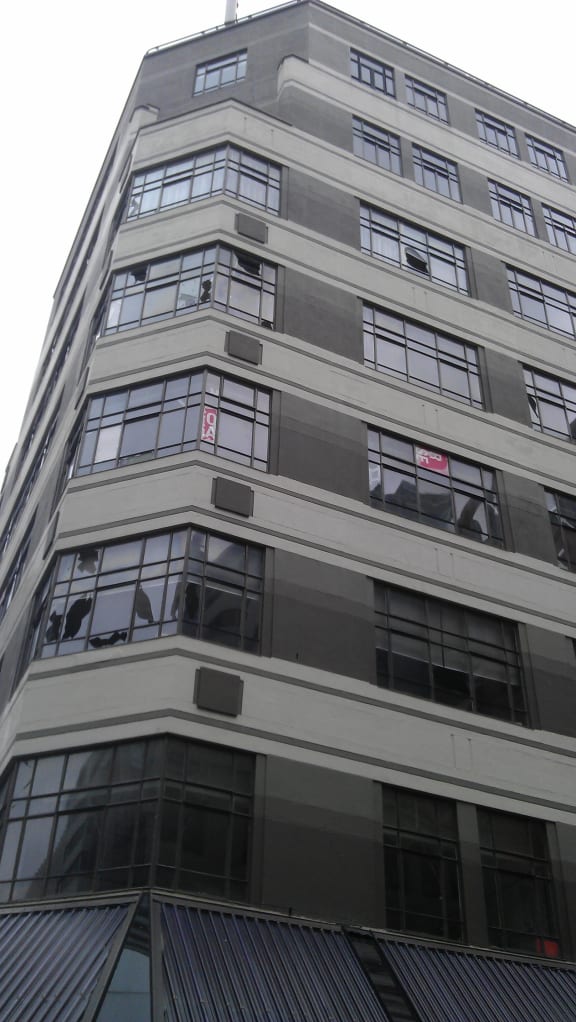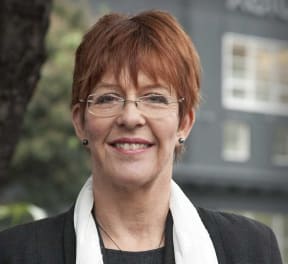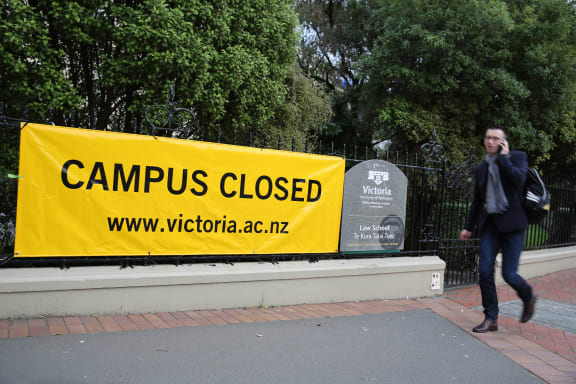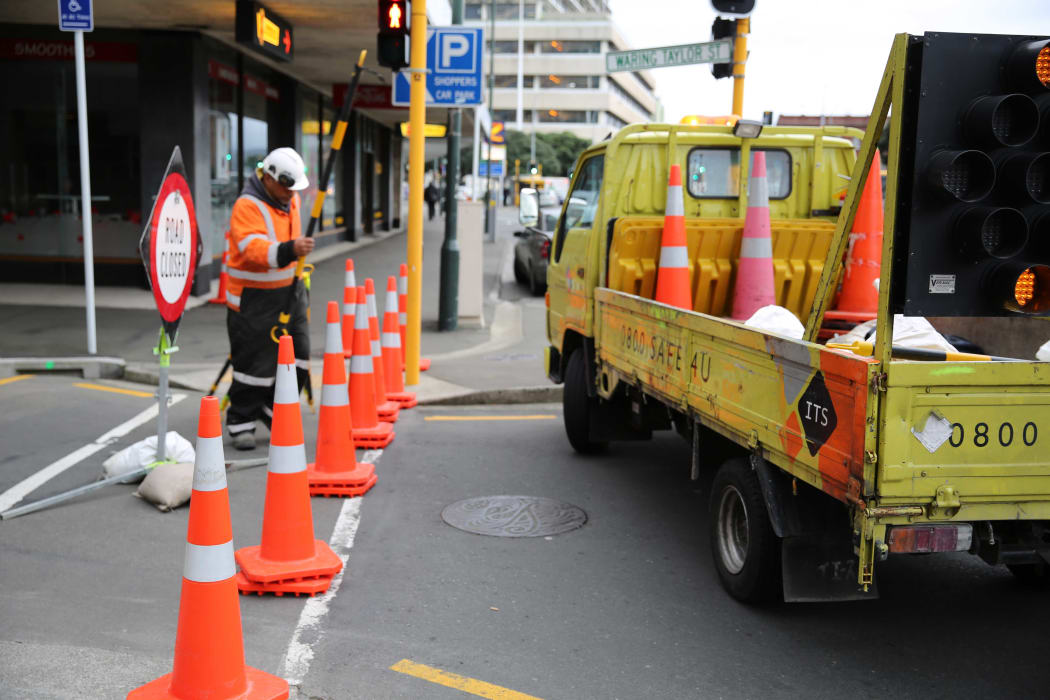Civil Defence says it should be business as usual in Wellington on Tuesday, with people able to return to central city and go back to work following a 6.5-magnitude earthquake at the weekend.

A damaged building in Featherston Street. Photo: RNZ
Structural engineers and inspectors spent Monday assessing many buildings for damage after Sunday's quake at 5.09pm off the Marlborough coast at a depth of 17km. A second quake measuring 5.2 happened minutes later and there have been hundreds of aftershocks.
Trains and buses would be running to normal schedules and the Wellington City Council said the damage to buildings was largely cosmetic, rather than structural, so workers could be assured that the CBD is safe.
Thirty-five buildings have been superficially damaged and about 12 on Featherston Street between Ballance and Grey streets remain cordoned off due to concerns over falling masonry and glass.
The council said almost 2500 buildings were "visually inspected" on Monday. However, chief building officer Richard Toner said owners need to ensure that they carry out their own inspections, and several car parks need further assessment.
After urging people to stay away from the central city on Monday, Civil Defence acting regional manager Rian Van Schalkwyk said it is now safe to return. "Everything is back to business as usual, so people are welcome back to their offices and their buildings. If they find buildings that's got some visible damage, they need to report that."
Engineers have completed a safety review of three major buildings on the waterfront, including that occupied by the BNZ, which suffered considerable interior damage. Though structurally safe, owners Centrepoint said no one can work in it until the ceiling is repaired.
Mayor Celia Wade-Brown said the capital has come through the earthquake relatively unscathed. She said the council had already embarked on a multimillion-dollar programme to strengthen quake-prone buildings and infrastructure.

Celia Wade-Brown. Photo: SUPPLIED
Ms Wade-Brown said the quake serves as a reminder that people need to be prepared and know what to do when the "big one" does hit. She said the risk of a catastrophic quake hasn't changed from it was last week and the capital is always bracing for a big tremor.
Prime Minister John Key said while continuing aftershocks are unnerving, people can have confidence in the local building code.
"There's always been a known earthquake risk here. A lot of buildings have been built to a very high standard. Even if you look at Christchurch, with the exception of the CTV building, those buildings came through those very large earthquakes extremely well."
Mr Key said the Government would top up the EQC fund - heavily depleted by the Christchurch quakes - so everyone who suffered damage in Sunday's quake and subsequent aftershocks would be paid out.
GNS Science said it is almost certain there would be another quake greater than magnitude 5 in the next week. Project director Ken Gledhill told a Wellington Regional Emergency Management briefing on Monday afternoon there had been more than 1000 aftershocks since a 5.7-magnitude quake on Friday and they would continue for the next few weeks.
Wellington Hospital has not reported any damage, but four patients with minor injuries were treated after Sunday's quake, including a man knocked out when a television fell on him.
Police said they would maintain a strong presence in the central city overnight on Monday, with double the usual number of staff on duty.
The Education Ministry is assessing damage to schools in Wellington ahead of students returning from holidays.
Problems at port
Wellington's port company will take engineering advice before deciding whether to rebuild on land that subsided in Sunday's earthquake.
Centreport chair Warren Larsen said he could see the subsidence happened on a portion of reclaimed land in the wharf area and the seawall there disintegrated with the quake's movement.
Mr Larsen said some work is needed to keep the port operating. There is still a cordon where the subsidence occurred and the road washed away, but other than that there are only isolated areas on the port land awaiting engineering clearance to reopen.
Many buildings closed
Several buildings and offices were shut on Monday, including council buildings, ANZ branches, ACC offices and Westpac Stadium. Te Papa museum was also closed, but a spokesperson said it has had only superficial damage to its store and some exhibits had moved.

Photo: RNZ
Buildings at Parliament suffered superficial damage, but were deemed safe to enter.
Most university campuses were closed, including Victoria's, but Massey said it is ready to reopen on Tuesday. The Ministry of Justice said all courts would be operating as usual from Tuesday.
The Mercure Hotel on Willis Street, which was evacuated on Sunday after possible damage to one of the floors was identified, has been cleared by inspectors to reopen. Guests were relocated for the night to its sister hotel, the Ibis.
View a gallery of Wellington's CBD following Sunday's magnitude 6.5 earthquake
Train services resume, airport open
Train services resumed across the Wellington network on Monday afternoon. KiwiRail said it has completed inspections on all lines and trains were running on a half-hourly timetable.
Tranz Metro said services may be suspended again if there are any strong aftershocks and is advising passengers to check its website before travelling.
Wellington Airport is open but runways were being checked regularly following aftershocks. Ferries are operating and ordinary bus services are running as usual.
Civil Defence said people should travel only if it is essential, and commuters in the greater Wellington region are advised to drive with patience and care.

Checks are made on Waring-Taylor Street in the central city. Photo: RNZ

